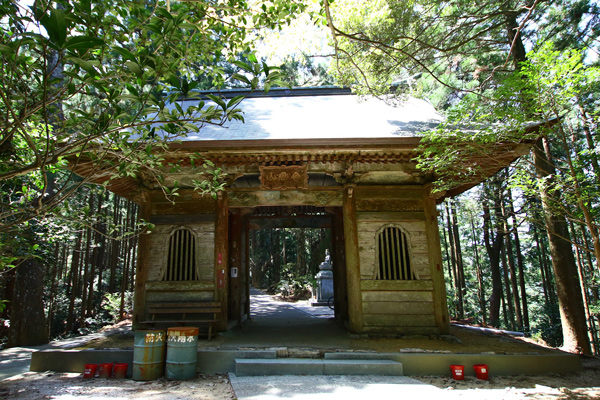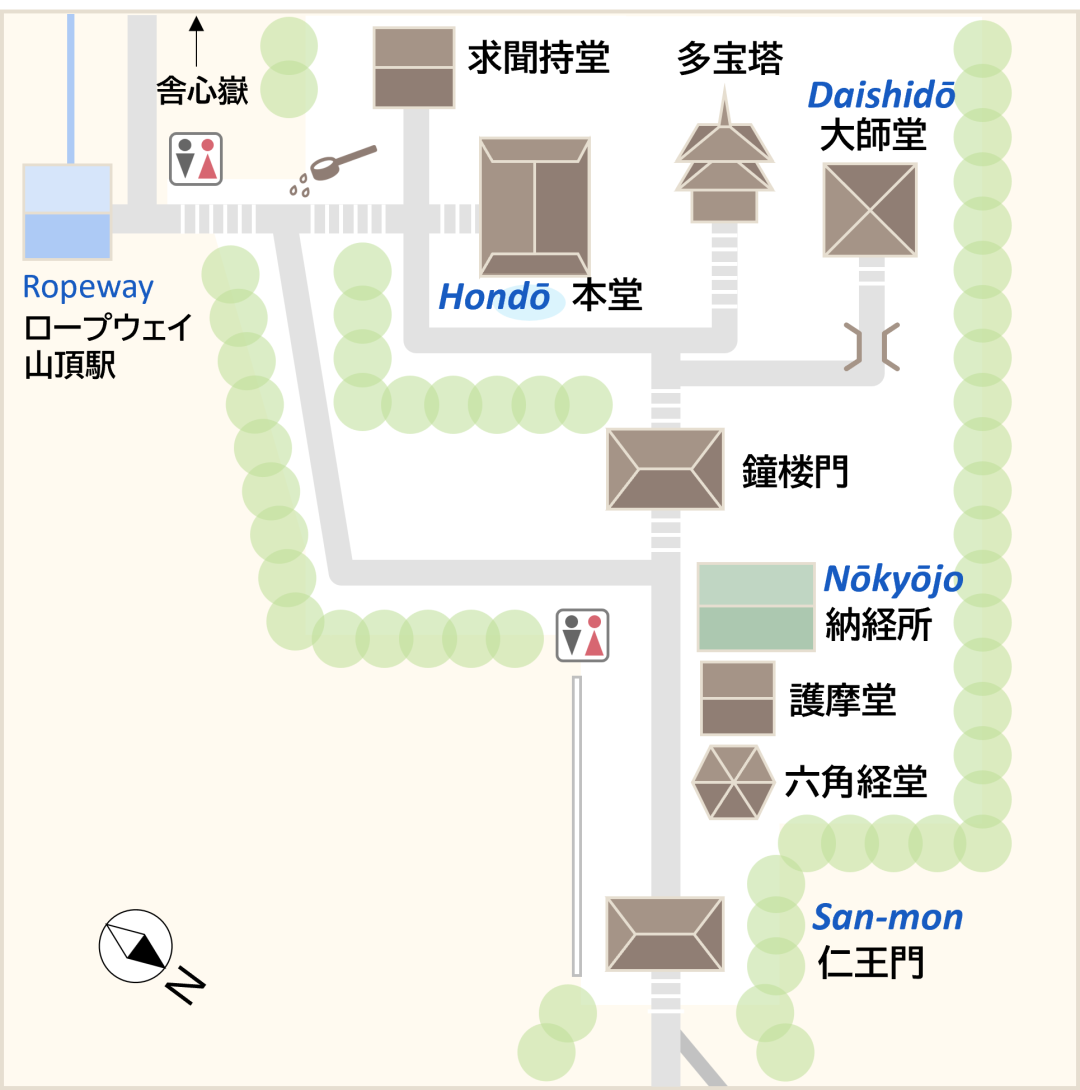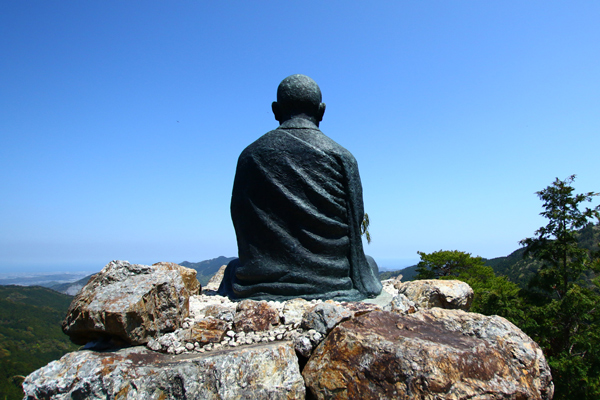The Shikoku Pilgrimage Temple Guide
Temple 21, Tairyūji

Precinct map

History of the temple
Tairyuji is sometimes known as the Koyasan of the West. It is located near the summit of Mt. Tairyuji, the southeastern tip of the Shikoku mountain range, at an elevation of 618 meters. The grounds evoke the spiritual atmosphere of an ancient temple with old cedar trees that are hundreds of years old towering over visitors. When Kobo Daishi was 19 years old, he engaged in Buddhist training for 100 days on a rock called Shashingatake, located about 600 meters southwest of the temple. He wrote about this in his book Sankyo Shikki (The Three Teachings), composed when he was 24 years old. The training that Kobo Daishi practiced is called Kokuzo Gumonjiho. It is the most difficult of all Shingon practices. The priest recites the mantra of Kokuzo one million times. It is said to have had a great influence on the formation of Kobo Daishi's thought during this period of his Buddhist studies.
According to legend, the temple was founded in 793 by order of Emperor Kanmu (reigned 781-786). The principal image is a statue of Kokuzo Bosatsu sculpted by Kobo Daishi. The mountain name of the temple (temples are metaphorically called mountains) comes from Shashingatake, where Kobo Daishi performed the Kokuzo Gumonjiho, and the institutional name of the temple comes from the dragon god that protected Kobo Daishi during his training.
The temple was well supported by the imperial family and the warrior class, and prospered to the extent that it had 12 branch temples in the late Heian period (794-1185). However, it could not escape the widespread destruction of temples in the Tensho era (1573-1592). Chosokabe Motochika destroyed this and many other temples during his invasion of Awa (Tokushima). During the Edo period (1603-1868), the temple was repeatedly damaged by fires and fell into disrepair, but each time it was rebuilt by the feudal lord of the time. The Niomon Gate was built in the Kamakura period (1192-1335). The other buildings were restored after the Edo period (1603-1867).
A ropeway opened in 1992 to carry visitors up to this mountain temple, which had been one of the most difficult places to walk to on the Shikoku Pilgrimage. On foot, it used to take 30 minutes to climb the slope from the parking lot. It is an ancient temple with a powerful and dignified atmosphere that recalls Kobo Daishi's days of ascetic practice.。
Highlights
Shashingatake
It takes about 15 minutes on foot from the precincts of the temple. There is a bronze statue of Kobo Daishi facing east on the rock. The word shashin means the mind stays and shows the spirit of Kobo Daishi.
Ropeway
The ropeway is the longest in western Japan, 2,775 meters long, with a 101-passenger capacity, and takes about 10 minutes.
Choseki
These choseki are from the Nanbokucho period(1337-1392). Eleven of the 18 remaining stones are Designated Cultural Assets of Tokushima Prefecture.

Details
Names: Shashinzan, Jōsyuin, Tairyūji
Denomination: Koyasan Shingon sect
Principal image: Kokuzo Bosatsu
Founded by: Kobo Daishi
Founded: 793
Access
Address: 2, Ryuzan, Kamo-cho, Anan City, Tokushima 771-5173
Phone: 0884-62-2021
Parking: Tairyuji Ropeway parking lot, 150 cars, 10 microbuses and buses, all day long, free of charge
Lodging: None
Official website: None
